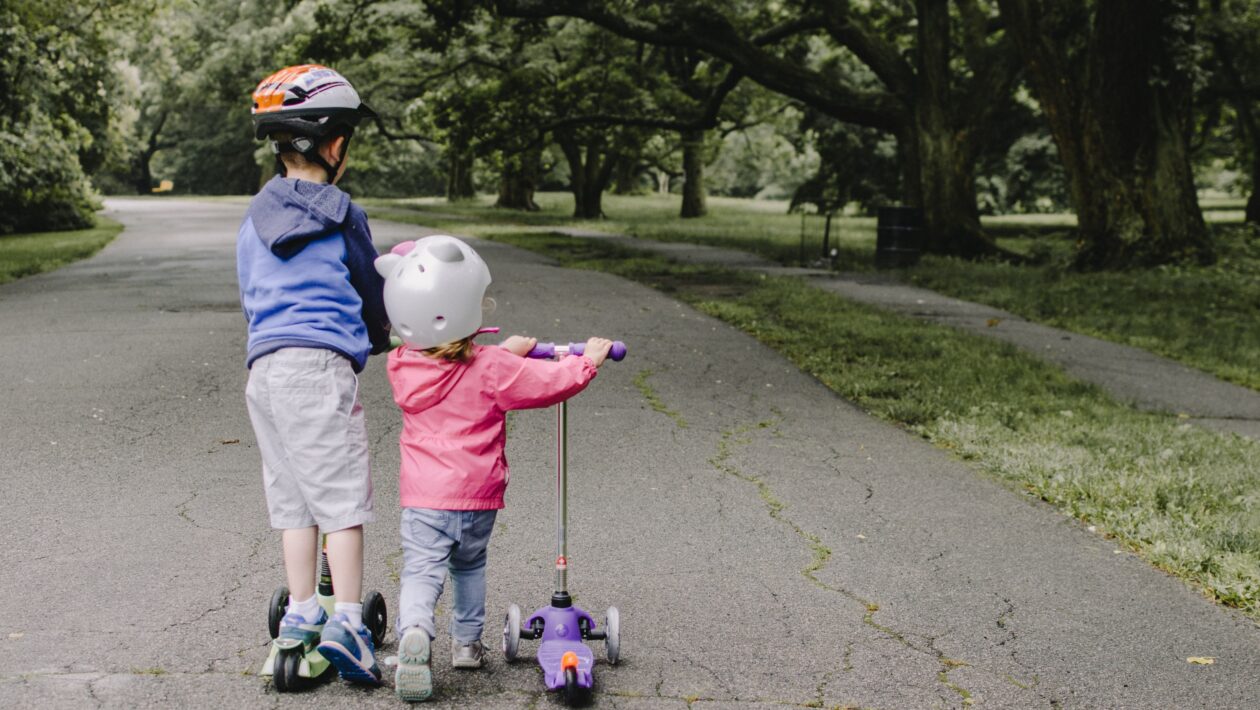Watching your toddler reach the age of four is an exciting milestone. It opens new skills for them to practice, which means we can introduce them to a lot of other interests as well. And if you are looking for a fun activity for your four-year-old, riding the scooter is definitely a worthy consideration.
Riding the scooter is not only fun and exciting. It also teaches your child essential skills, such as balance and coordination. At the same time, there are rules to follow, so your little one also learns the importance of obedience and safety. It can also serve as a bonding moment between you and him/her, as well as an exercise to practice empathy and socialization with his/her peers.
CuteLittleDarling.com mentioned the importance of choosing the appropriate scooter for 4-year-olds before you just get any scooter. Not every model in the market is meant for kids this age, and there are also a lot to choose from, so it can be confusing for first-time buyers.
Don’t: Not Checking the Type of Scooter Suitable for Your Child
Do: Finding the Compatible Scooter for Your Child
What’s Your Child’s Height and Weight?
As your child reaches a certain age, you can also expect the physical activities that he/she will be capable of doing. At the age of four, children can already stand unsupported, as well as walk up and down the stairs, and walk forward and backward. They can also pedal a tricycle and balance on one foot for more than 9 seconds. Therefore, it’s the ideal age to start them on the scooter.
But just because your child is four years old doesn’t mean that he/she can use any scooter on the market meant for this age range. Each model also has height and weight recommendations that you must follow for your child’s ease of use and safety. Your child might be too light or too heavy for the scooter, and the handle might not be adjustable to accommodate your little one’s height.
Now that you have the numbers checked, the next thing for you to consider is the scooter parts themselves. For example, we recommend choosing a model that has a wide deck for four-year-olds. If you’re not familiar with the terminology, the deck is simply the board where your child stands.
So as you can assume, the wider it is, the easier it will be to ride for young kids that are new to scootering. Once your four-year old gets more used to riding, you can switch to a narrower deck for a faster scootering experience because it’ll be easier to kick with. Your child might also find it more comfortable with the deck that’s wide at the front but narrower at the rear end to give more room for kicking.
Besides the size of the deck, you can also inspect how high it is from the ground. You don’t want the deck to be too high for four-year-olds because your child will need to squat much lower.. As a result, it’s more strenuous to use while riding. A height of 4 to 5 or 7 inches maximum should be sufficient because four-year-olds are typically just learning and won’t be riding over uneven terrains anyway.
Lastly, we recommend getting a scooter with an adjustable handlebar height. This way your child doesn’t stay in an awkward posture when he/she is holding the handlebar for balance. When your child stands at the deck, you want the handlebar to be at the same height as his/her waist.
Don’t: Starting Immediately with a Two-Wheel Scooter
Do: Introduce Your Child to a Three-Wheel Scooter
What are the Physical Capabilities of Your Child?
As we have mentioned earlier, there are milestones that you can expect when your child reaches the age of four. However, some kids may take longer to reach them compared to others, so make sure you’re getting a scooter that matches your child’s physical capabilities.
For four-year-olds, we recommend getting a three-wheel scooter. When you think of a scooter, what comes to mind is usually the type that has one wheel at the front and one at the rear. But for younger kids and new learners, opt for a three-wheel design where there’s two at one end and one wheel at the other.
However, it’s not enough that you’re aware that you should get a three-wheel scooter. The market presents two kinds of three-wheel units. The two wheels can either be at the front or at the rear of the scooter.
If you think about it, having two wheels at the front is going to be more stable and easier to balance for newbie riders. When your child gets the hang of riding, you can transition him/her to scooters with two wheels at the rear. This gives him/her some practice before directly using a two-wheel scooter.
You may also find kick and electric scooters in the market that brands present as their recommendations for four-year-olds. As mentioned previously, you’re the one who can notice if your child is ready to use a slightly difficult design. So for starters, it’s best to begin with a kick scooter because this teaches your child balance and coordination compared to electric scooters.
For more experienced four-year-olds, you can introduce them to electric scooters. The reason behind this is because electric scooters use a motor that propels the scooter compared to kick scooters where your child is the only one who’s doing everything, including speed control. For him/her to be able to control an electric scooter, he/she should be experienced in a kick scooter first.
Lastly, opt for a scooter that uses a lean-to-steer technology. Compared to the bikes or scooters we adults use, child scooters usually steer without the need to use the handles. Your child will just turn his/her body to the direction, and the scooter will follow. This is useful for four-year-olds because it teaches them direction safely without the scooter turning sharply.
Don’t: Not Checking the Scooter’s Safety Features
Do: Inspect Each Part of the Scooter and Educate Your Child with Safety Measures
Does Your Child Know How to Handle Obstacles Safely?
Lastly, don’t forget to check all the safety features of the scooter. Regardless of whether your child is four years old or older, the unit should be equipped with different features to make the ride safe. For example, the overall build of the scooter should be of high quality.
If the adjusting handlebar does not lock securely or if the connection between the neck and T-bar is stable, you can only assume that it wouldn’t require heavy usage for the scooter to fall apart and potentially injure your child.
Once your preschooler gets the hang of riding the scooter, he/she will inevitably get more experimental with the unit’s speed. Therefore, you want to teach your child how he/she can slow or halt safely. And this particular feature is owed by the scooter to its braking system.
Different scooters use different brakes ranging from handbrake to footbrake. If you imagine it, it’ll be easier for kids to engage a footbrake located on the rear pedal. When they are kicking, this location is quicker to reach compared to a handbrake that can confuse newbie learners. You can also get a scooter with an anti-skid deck to prevent slipping as your child rides.
Besides having safety parts, don’t forget to give your child the proper training about road rules and what obstacles to avoid. Always dress them in safety gear composed of helmet, elbow pads, and knee pads. And do not leave them unsupervised while riding the scooter.








